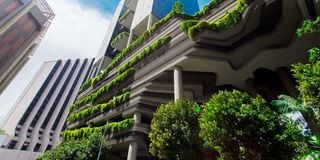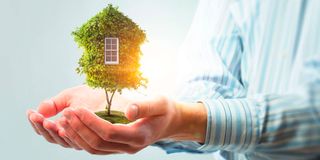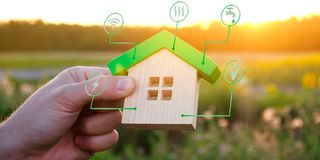Breaking News: Former Lugari MP Cyrus Jirongo dies in a road crash
Premium
Green Buildings are doubling in Kenya, why is the residential sector lagging behind?

Green building adoption in Kenya has seen a significant rise, with over 100 buildings now either registered or certified.
In an article published by DN2 Property towards the end of 2022, we established that commercial real estate tenants, especially multi-nationals, are demanding Green Buildings and that the market was barely meeting this demand.
We sought to understand whether this is changing from Nasra Nanda, CEO & ESG Lead at Kenya Green Building Society (KGBS). Nasra is also the Chair, Africa Regional Network-World Green Building Council. She took us through the state of Green Building in Kenya, the challenges, why the residential real estate sector is still lagging behind and why we need to make sustainable construction practices inclusive.
What is the state of green building in Kenya?
Green building adoption in Kenya has seen a significant rise, with over 100 buildings now either registered or certified. This represents an almost twofold increase from the previous numbers, considering that by June 2022, the count stood at 64 registered or certified buildings— which was itself more than twice from the preceding year when KGBS had reported 25 certified buildings in 2021.

Kenya Green Building Society CEO Nasra Nanda.
What can we attribute to the rising numbers?
Covid-19 accelerated the business case for sustainability. The built environment became aware that the spaces we occupy need to promote our health and safety. People did not need much convincing to rethink their spaces. When we realised how buildings affected us, companies started looking at how the spaces they occupied could impact their revenues. Investors in real estate renting out to tenants had more pressure from the target market to build sustainable spaces. Essentially, Covid served as a conversation starter and the market took sustainability seriously.
When we talk about green buildings, we assume everyone should know what it means, what attributes make a building green?
A green building, also known as a sustainable building, is designed, constructed, and operated to have minimal negative impacts on the environment while maximising benefits to occupants and society.
Key characteristics of a green building include energy efficiency, water-use efficiency, sustainable materials, waste reduction, better indoor air quality, natural lighting and ventilation, renewable energy, site selection and land use that minimises disruption to ecosystems, adaptability and resilience, efficient innovation and design.
How knowledgeable is the average builder/developer when it comes to sustainable building?
There is a capacity and skills gap due to insufficient training and education on green building techniques among architects, engineers, contractors, and other built environment professionals in tertiary institutions. We are trying to bridge the gap, and so far, we have trained 150 plus qualified professionals on green rating tools through our training and capacity building programs.
Kenyan builders have always used building codes as their guiding principles, are the codes evolving with the green building movement?
In 2020, Kenya released the first update to the 1964 Building code. The new building code, known as Kenya Draft Building Code 2020, was the first attempt to align Kenya’s codes to Eurocodes. There is, however, need for improvement on the codes with respect to green and climate resilient construction and infrastructure.

A green building is designed, constructed, and operated to have minimal negative impacts on the environment while maximising benefits to occupants and society.
Are there policy or legal gaps that make it difficult to achieve a greener built environment?
First, there is lack of comprehensive Green Building Regulations. If the existing building codes and regulations do not comprehensively address key sustainability practices, like energy efficiency, use of sustainable materials, waste reduction, and water conservation, the mainstream adoption of greener construction practices is hindered. Second, green building practices are not incentivised or enforced enough. Incentives such as tax breaks or other financial benefits for developers and property owners who incorporate green features into their buildings can be crucial motivators. Similarly, robust enforcement is necessary to ensure that regulations are adhered to.
If you were to make suggestions on simple building codes that can make our building practices more sustainable, what would you recommend?
The low hanging fruits are around ventilation and natural light. I would say how we build should emphasis on maximising natural light and ventilation. These are things that do not cost money. If you use natural light, it means you will not have your lights on during the day. Maximising on ventilation means we have more fresh air and the impact on our health is positive. These simple adjustments cut on cost, while contributing to sustainable building.
Which sector of the real estate industry has been more receptive to sustainability practices?
Commercial real estate has been a front liner. This covers offices, retail buildings, apartments, and industrial properties. Notably, certifications of single-family residential buildings are much lower than those of commercial buildings. From the 100 plus certified buildings in our list, only two are single family residential buildings.

Green building.
Two is quite low considering that residential houses form the bulk of construction projects in Kenya, what could be holding back the residential sector and what incentives should inspire homeowners to build sustainably?
When we look at green building contextually, from where it started - commercial buildings and the investors in this sector were building for the average person who occupies commercial spaces during their work hours. The shift was driven by demand for greener buildings by commercial and industrial tenants. However, this was just but a starting point, and we can only hope that the sustainability conversation will trickle down to individual homeowners.
Nonetheless, industry professionals in Kenya can drive the shift towards greener homes through a number of interventions. Aspiring homeowners, for starters, need more information on sustainability. Professionals can create awareness through workshops and seminars.
They could also showcase sustainable features in demonstration homes, especially during the project briefing and design stages. If they can highlight long-term benefits like increased property value and health advantages, they may be able to inspire a cultural shift towards sustainable residential construction practices.
The government also has a role to play, and industry stakeholders can advocate for supportive government incentives like favourable financing for eco-friendly homes, while also championing the recognition of green building certifications as benchmarks for sustainable construction.
What challenges are developers facing?
The extra cost of certification has traditionally been incurred by the developer, which demotivates those who may want a green label on their construction projects. It’s only now that banks and financiers are willing to provide developers with better rates after realising green building is a safer investment for their money, as target tenants are more willing to cough up more for properties that are green.
Is the cost and availability of green building materials a challenge?
Yes, it could be a challenge. Right now, KGBS is working with Financial Sector Deepening (FSD) Kenya to develop an “Alternative Building Report”. We are trying to gather information on the sustainable alternative building materials that are available locally and their cost. That report would answer this question sufficiently before we then investigate two other issues; if we do not have enough sustainable building alternatives locally, that means developers are importing more, which undoubtedly increases the cost. But if we do have enough sustainable materials, then we have to look into why there is low uptake. Could it be accessibility, affordability or behavioural change issues? With the report we will be able look at possible interventions to address the challenges that exist.
The average buyer and tenant has had to contend with “greenwashing” narratives given that everyone now wants to hop onto the climate action conversation. How can tenants and property buyers ascertain the “greenness” of a building?
Ascertaining the true "greenness" of a building amidst potential greenwashing practices requires careful evaluation and due diligence. Checking for Independent and third-party verifications, such as EDGE (Excellence in Design for Greater Efficiencies), LEED (Leadership in Energy and Environmental Design), BREEAM (Building Research Establishment Environmental Assessment Method), or local green building certifications is a great starting point. These certifications involve rigorous assessments and audits to validate a building's sustainable features.
Buyers could also request for documentation related to a building's sustainable features, such as energy performance reports, materials used, water efficiency measures, and waste management practices. If possible, engage the property developer, landlord, or real estate agent and ask specific questions about the building's green features. Some buildings will have visible signs of sustainability, such as solar panels, green roofs, efficient lighting, and eco-friendly materials. Buyers can also go a step further and consult experts or use online resources that specialise in green building practices to help interpret technical construction details.
About the Jenga Green Library, how does KGBS accredit the products?
Jenga Green Library is not an accreditation platform; therefore, KGBS does not offer third party verification of the submitted products or the environmental claims made by the organisations listed.
What KGBS does is review the information provided by submitting companies against an assessment methodology using review metrics per product category. The goal is to list building materials that perform better in terms of energy used in production, ease of installation, thermal and acoustic insulation in comparison to conventional products available in the market. We are listing products under several categories such as energy efficiency, architectural construction materials, lighting and acoustic comfort, indoor environmental quality, renewable energy, site and environmental protection, recycled content materials and water efficiency. Under Site and Environmental Protection category for instance, the intent is to select and list products that have a minimal if not negligible impact or ecological damage to existing natural features, water bodies, flora and fauna.
To help consumers decide on whether the products are green enough, items in the library have an efficiency feature section that compares products to the mainstream or conventional alternatives.
For developers who wish to have their buildings join the growing list of green buildings, how can they get their projects certified?
The first step in getting a project green certified is to determine which certification program they wish to pursue: There are various certification programs available, such as the ones we discussed earlier. Research and select the most appropriate program for a project. We can use the EDGE Certification process as an example. The first step is to register your project. Receive a preliminary EDGE certificate at the design stage, then repeat the process at the post-construction stage to earn final EDGE certification. Existing buildings can go straight to final certification.
Final thoughts on sustainable building?
I think we need to start looking at the built environment as an eco-system of opportunities. What this means is that the green journey and the uptake of green buildings needs to be executed in a way that empowers Kenyans to be more mindful in building sustainably. As KGBS, we are exploring what contextualisation means for Kenyans and the developing markets. Once we figure that out, we will be able to include everyone, including those from low-income communities that are often overlooked. I don’t think there is a person who does not what to have a healthy home.
Sustainability is a journey. It can be as complicated or as simple as we want to make it. Moving forward, we need to contextualise sustainability for the African setting, which allows a plethora of solutions, 60 percent of Nairobi residents live in informal settlements, and among the rest (40 percent) there is a large number who cannot afford some of the expensive solutions in the market. As we come up with sustainable building solutions, they need to be inclusive.





